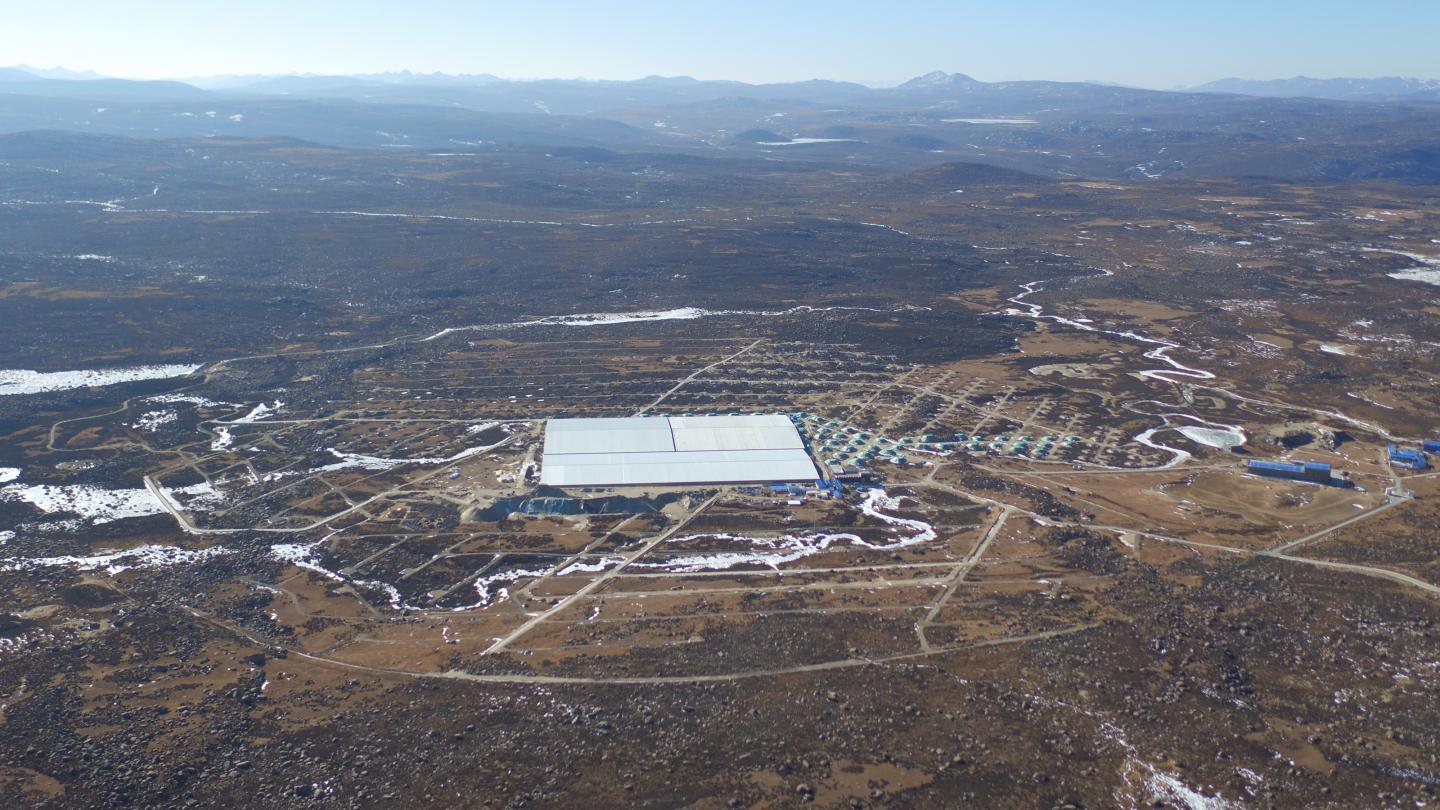LHAASO is expected to decode cosmic-ray origins

Credit: Institute of High Energy Physics (IHEP) of the Chinese Academy of Science
China’s Large High Altitude Air Shower Observatory (LHAASO) launched its first set of detectors on April 26, 2019. It marked the beginning of comprehensive research effort in observing and detecting very high energy cosmic rays with the anticipated world most sensitive gamma ray detection facility.
Located in the high mountains of Sichuan Province, China, LHAASO’s goal is to discover high energy gamma ray sources, and it is expected to be able to precisely measure the radiation spectrum of very high energy gamma ray sources and energy spectra of various cosmic ray species over a wide range.
LHAASO’s Phase One detectors include the No. 1 Water Cherenkov Detector Array (WCDA-1) with an active area of 2.25 hectares, as well as two wide-field Cherenkov telescopes and 80muon detectors (MDs) and180electromagnetic detectors (EDs).
The full scale WCDA, which will eventually comprise three ponds, is designed to survey for gamma ray sources above 100billion eVs. Assisted by the rotation of the Earth, the WCDA will be able to scan over 60% of the sky each day. It won’t be affected by the light of the sun, moon or stars or by the weather, thus ensuring round-the-clock observation. In the future, the WCDA will be able to record 5 trillion cosmic ray detections each year and obtain more than 4PB of data.
WCDA-1, which has commenced scientific operation, is composed of 900 units. Each is equipped with an 8-inch and a 1.5-inch photomultiplier tube. Already, the sky-surveying sensitivity of WCDA-1 is slightly higher than another international facility, the HAWC Experiment in Mexico built mainly by the United States and Mexico. Wide and deep collaboration between LHAASO and other facilities, including HAWC, will be expected in the detection of the high energy radiation of gamma-ray bursts (GRBs), the detection and observation of extragalactic blazars and the high precision observation of gamma ray sources in the Milky Way, among other activities.
LHAASO is expected to make breakthroughs concerning the origin of cosmic rays, according to Prof. CAO Zhen, LHAASO’s chief scientist and an astrophysicist from the Institute of High Energy Physics (IHEP) of the Chinese Academy of Sciences. Prof. Cao noted that the origin of cosmic rays “has puzzled the world for over a hundred years.”
Both international and domestic experts have been invited to observe and discuss LHAASO’s work. This broad outreach is in line with LHAASO’s goal of international scientific collaboration.
Prof. WANG Yifang, IHEP director, said that astronomical observation “has entered the era of combining multi-wavelength observations and multi-messenger studies together.” He emphasized that LHAASO would enhance major international astronomical observation efforts and boost the progress of such research.
###
More About LHAASO:
LHAASO is one of China’s major national science and technology infrastructure projects and is located in the Mt. Haizi National Reservation at 4,400 meters (14,435 feet) above sea level. The project was approved as part of the country’s “12th Five-year Plan” (2011-2015). Construction began in June 2016 and is expected to be completed in 2021.Since detectors are being distributed across a wide area, LHAASO has begun observation even as construction continues elsewhere on the site.
LHAASO will comprise an array of 5,195 electromagnetic detectors (EDs); an array of 1,171 mu on detectors (MDs); a Water Cherenkov Detector Array (WCDA) spanning three ponds with a total active area of 7.8hectares; and an array of 12 wide-field Cherenkov telescopes (WFCTA), distributed in an open space of 1.3 square kilometers.
LHAASO is expected to achieve a gamma ray sky-surveying sensitivity of 1% crab (the gamma intensity of the standard candle) above 100billion eVs and precise measurement of gamma ray spectra of sources above 50 trillion eVs – an unprecedentedly high level of sensitivity and energy. LHAASO is also expected to measure the spectra of cosmic ray species at high precision from 5×10^13 eVs to 10^18 eVs.
Media Contact
GUO Lijun
[email protected]




